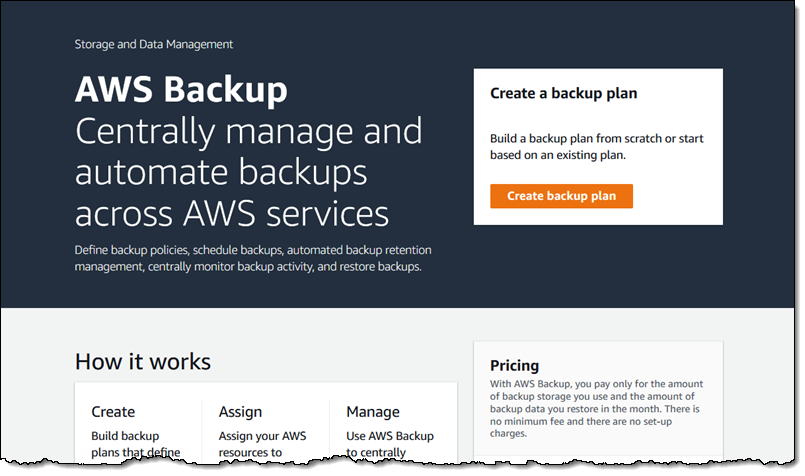

When you are done choosing the options that you want to use, click the Create On-Demand Backup button to start the backup. If you do not yet have a backup vault then you can use the Create New Backup Vault button to create one. The last thing that you will need to do is to choose the backup vault that should store the backup that you are creating. The role that you choose will provide the permissions that allow the bucket to be backed up.

Similarly, you can choose to use the default IAM role or you can choose a custom role. You can specify a retention period if you wish, or you can just leave the retention period set to Always. Backups are normally launched within an hour, although I have heard unconfirmed stories of backups taking up to two hours to start. It is worth noting that the Create Backup Now does not usually start the backup instantaneously. For an on-demand backup, you would typically want to use the Create Backup Now option, although you can use a custom backup window if you want. The next option allows you to choose the backup window. Remember, you can only back up buckets for which versioning is enabled. Next, you must choose the bucket that you want to back up. The first thing you will need to do is to choose the S3 option from the Resource Type drop down list. Figure 3: Set the Resource type to S3 and choose the bucket that you want to back up. Set the Bucket Versioning option to Enable and then click Save Changes. From there, select the bucket's Properties tab and then click the Edit button that is located within the Bucket Versioning section. If necessary, you can enable versioning for a bucket by opening the S3 console and then clicking on a bucket. AWS Backup is only able to back up S3 buckets that have versioning enabled. Before I show you how to do this, there are a couple of things that you need to know.įirst, enabling the backup of S3 buckets does not necessarily give you the ability to back up every S3 bucket. Once the AWS Backup console opens, the first thing that you will have to do is to enable S3 backups.

In either case, select the AWS Backup option from the list of services (it's in the storage section). While you can create ongoing backups of S3 buckets, it is also possible to try out the new S3 backup capabilities by creating an on-demand backup. Recently however, Amazon has enhanced AWS backup so that it is now possible to use it to back up data that is stored in S3 buckets. Although Amazon has long offered backup capabilities through its AWS backup service, Amazon S3 was conspicuously absent from the list of supported services.


 0 kommentar(er)
0 kommentar(er)
